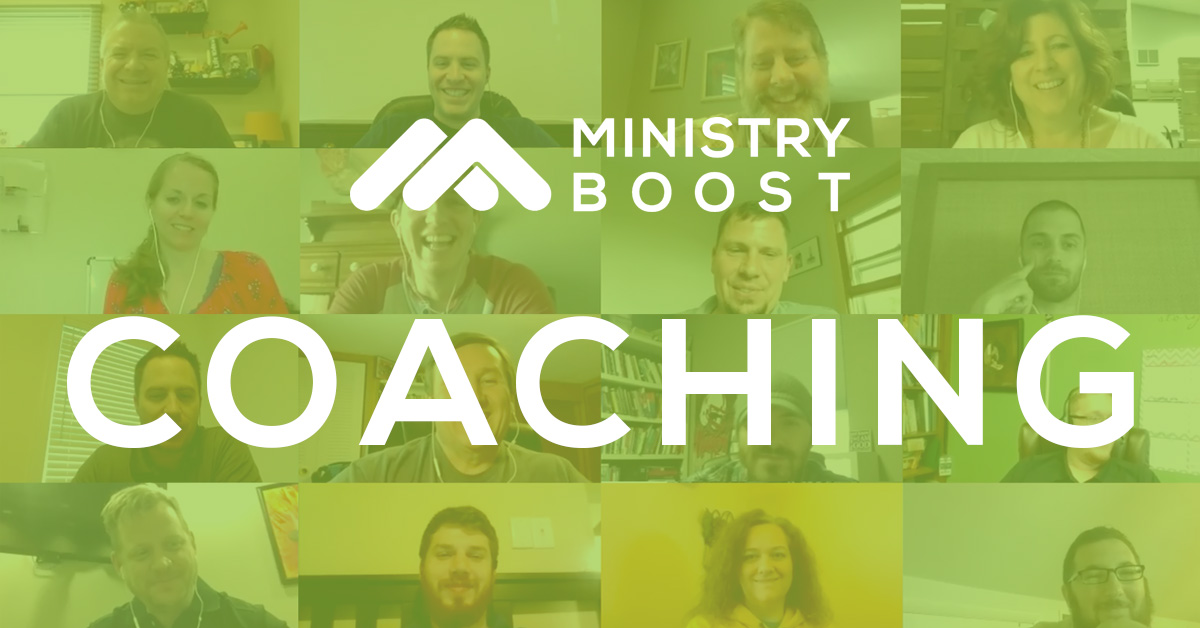Today, we're diving into effective ways to train and inspire volunteers within our ministry. Over the years, many of us have collected various ideas from diverse sources, like blogs and sermons, to help us in these endeavors. It's crucial to be intentional and consistent when training, rather than only addressing it in times of need. By maintaining a regular schedule, we can ensure that our volunteers remain motivated and aligned with our mission.
We'll discuss ten key ideas that can universally apply to all volunteers, no matter their specific roles. These strategies promote a deeper connection to our ministry's vision and genuine inspiration. The goal is to create a supportive environment where everyone understands their contributions and feels valued.
Key Takeaways
- Intentional, consistent training keeps volunteers motivated.
- Sharing personal and ministry stories can inspire and reinforce our vision.
- Communicating our strategy ensures everyone knows how they fit into our mission.
Vision and Intentionality
When training and inspiring our volunteers, our primary focus is on fostering a deep understanding of our vision and being intentional about how we communicate and implement this vision. It's crucial to detail our church's or ministry's vision, explaining why it's significant and necessary for our community. For example, our vision to reach people who are not part of any church is particularly relevant in regions like ours, which have a lower density of churches compared to other parts of the country.
Three Key Strategies
- Celebrate the Vision with Stories: Sharing stories can powerfully illustrate how our vision is being realized. We can collect and present stories from individuals who have been impacted by our vision. Whether through live interviews, Zoom calls, or recorded videos, these narratives bring the vision to life.
- Update on Vision Accomplishments: It's easy to overlook the importance of regularly updating everyone on our progress. Highlighting achievements such as significant baptism events or other milestones helps volunteers see the tangible results of their efforts. This provides motivation and a sense of accomplishment.
- Teach Church Strategy and Ministry Fit: Clarifying our overall strategy and how each ministry fits into this strategy is essential. For instance, understanding how various pieces of our strategy—such as discipleship or community outreach—fit together helps volunteers see their specific roles within the broader framework.
Engaging Values and Culture
Covering our church's values or culture statements regularly can also reinforce our vision. While we might have an extensive list of values, focusing on one at a time throughout the year serves as an opportunity to discuss how we operate and why we do things a particular way. This keeps our core principles fresh in everyone's minds, ensuring that we maintain a consistent and intentional approach in all our endeavors.
Monthly Focus Strategy
To keep our volunteers motivated and aligned, we implement a structured monthly focus strategy. Here are some key elements:
1. Detailed Vision Sharing: Our goal is to consistently share and elaborate on the church's vision. It's not just about repeating our mission but teaching its importance. For instance, our aim is to reach those not affiliated with any church. This is crucial, especially in regions like ours, where church attendance is lower compared to other parts of the country.
2. Celebrate with Stories: We gather and share three impactful stories each month that highlight how our vision is coming to fruition. These could be live interviews, video calls, or recorded segments. Real-life stories resonate and reinforce our mission.
3. Vision Accomplishment Updates: Regular updates on our progress are essential. Even simple updates, like the number of recent baptisms, can be uplifting. For example, celebrating 36 baptisms in one day, nearly half of our peak annual number, is a significant achievement that boosts morale and engagement.
4. Teach Strategy and Integration: We make sure everyone understands our church's overarching strategy and how each ministry fits within it. This includes broad strategies like making disciples and specific steps like greeting first-time guests. Clarity in strategy helps everyone see where they fit and how they contribute.
5. Highlight Values and Culture Statements: Each month, we focus on one of our church’s values or culture statements. With 11 statements, it's a year-long journey of reinforcing our culture. These discussions serve as a foundation for understanding and embodying our church's way of doing things.
Ideas for Volunteer Training and Inspiration
Share Our Church's Detailed Vision
We start by sharing our church's vision in great detail. For instance, our goal has always been to reach individuals who do not attend any church. It's crucial that we explain why this vision is so important and needed. Many regions are heavily populated yet lack active churchgoers, and we aim to change that.
Celebrate Vision with Stories
Gathering and sharing stories is a powerful way to celebrate our vision. We could invite people to share their experiences, either in person or through recorded videos. These personal stories vividly illustrate what we're striving to achieve and help everyone feel connected to our mission.
Update on Vision Accomplishments
We often forget the importance of updating everyone on the progress we’ve made towards our vision. Sharing successes, like a recent baptism event that drew significant participation, can be very motivating. Volunteers need to hear about these impactful moments to feel the value of their contributions.
Teach Our Church Strategy and Ministry Fit
It’s beneficial to teach our overall church strategy and where each ministry fits within it. Understanding the big picture helps volunteers see how their roles contribute to the larger mission. We should discuss broader strategies like how we make disciples and how every ministry plays a part in achieving our goals.
Cover Our Church Values or Culture Statements
Each of our church's values or culture statements can be an excellent training topic. By focusing on one statement at a time, we can delve deeply into what it means for our day-to-day activities. These values guide how we operate and ensure that everyone is aligned with our church’s core principles.
Leveraging Personal and Ministry Stories
Every volunteer meeting can be enriched by sharing personal and ministry stories that reflect our vision. Personal stories provide authenticity and can make difficult concepts more relatable. Even if certain personal stories can't be directly replicated, they can inspire and give valuable context to the broader vision.
Ministry stories also play a crucial role. For instance, recounting an event where a significant number of people were baptized can be very inspiring. It highlights the tangible effects of our efforts and serves as a powerful testament to our mission. Regularly sharing these accomplishments keeps everyone engaged and motivated.
To best leverage these stories:
- Interview individuals: Whether in person or via a Zoom call, capture their journey and share it with the volunteers.
- Document Milestones: Keep track of significant achievements and make sure everyone is aware when they happen.
- Contextualize the Stories: Explain why these stories are important and how they contribute to the bigger picture.
By consistently incorporating these narratives into our training sessions, we ensure our volunteers remain inspired and connected to our mission.
Consistent Volunteer Engagement
Ensuring that our volunteers remain engaged requires a blend of intentional training and regular communication. It's easy to fall into the trap of only addressing engagement when morale dips or during the once-a-year volunteer meeting. Instead, our approach has to be consistent and proactive.
Monthly Vision Sharing
We must frequently share our ministry's vision in detail, going beyond simple slogans. For instance, if our mission is to reach those unaffiliated with any church, we need to explain why this focus is essential. Give volunteers a thorough understanding of the vision's unique importance, especially in our local context.
Storytelling for Motivation
Collect and share stories that celebrate our vision being put into action. These can be shared through personal interviews, Zoom calls, or video segments. Highlighting real-life examples where our vision has made a tangible impact can significantly boost motivation.
Updates on Vision Progress
Regularly update volunteers on how our vision is being achieved. Use concrete examples and statistics, like the number of people recently baptized, to show progress. Everyone wants to see that their time and effort are contributing to meaningful outcomes.
Teaching Strategy
Help volunteers see the bigger picture by teaching our overall strategy and how each ministry fits within it. Explain the steps we take to make disciples and how different roles contribute to this process. Knowing their part in the strategy enables volunteers to serve more effectively.
Reinforcing Values
Discuss our church's values or culture statements regularly. Break them down one by one and explain how they influence our approach. These values guide our actions and help create a cohesive, purpose-driven environment for everyone.
By making these practices a regular part of our training, we can create a more engaged and enthusiastic volunteer team.
Church Geography and Demographics
Our church is located in Maryland, part of a densely populated region stretching from Baltimore to Maine, where over a quarter of the U.S. population lives. Despite this, the area is not heavily churched compared to regions like the Bible Belt in the South. This lack of churches provides us a unique challenge and opportunity to reach people who are not part of any church.
Maryland, with cities like Baltimore and the D.C. area, presents a diverse demographic landscape. Our outreach efforts aim to engage a wide variety of individuals, reflecting the rich cultural tapestry of our community. This diversity means that our church community includes people from various backgrounds, experiences, and stages of life.
We have noticed that many of our members come from other churches, highlighting the transient nature of our congregation. This factor brings both richness in experience and the challenge of integrating these diverse backgrounds into a cohesive church family.
Our geographical positioning also influences our vision and strategic initiatives. Understanding the unique characteristics of our region helps us tailor our messages and programs to better serve and connect with our community. We focus on making our church a welcoming space for everyone, particularly those who have not been part of a church before.
Effective Communication of Vision and Strategy
When we dive into the 10 ideas to train and inspire volunteers, the key is to consistently communicate our vision in detail. For instance, our goal is to reach individuals who aren't already part of any church. It's important to explain why this specific vision matters. Many people come from other churches, just as many of our initial team members did. Highlighting why we aim for those not connected to any church shapes understanding.
We should also celebrate our vision through real stories. Bringing in a few people to share their experiences, whether live or via video, makes the vision come alive. These narratives resonate deeply, showcasing how the vision is effectively transforming lives.
Keeping our volunteers updated on how the vision is being accomplished is crucial. For example, when our church managed to baptize 36 individuals in one event, nearly half of what we typically achieve in a year, it was vital to share this with everyone. Such milestones energize our community, reinforcing the purpose behind our collective effort.
Explaining our church’s strategy and how each ministry aligns with it is another important step. This helps everyone see the bigger picture, understanding how different parts interconnect to fulfill our mission of making disciples. When volunteers grasp the overall strategy and their role in it, they can better contribute to our goals.
Reviewing one of our church’s values or cultural tenets periodically is beneficial too. These statements, even if numerous, serve as a foundation for our actions. Discussing each value over time allows us to reflect on why we do things the way we do, aligning everyone’s efforts towards our shared mission.
Fostering a Supportive Volunteer Culture
Creating an environment where volunteers feel valued and inspired is vital. We need to ensure that we consistently share our vision in detail. This helps everyone understand why we do what we do and how significant their roles are. For example, if our vision is to reach people who are not part of any church, we need to discuss why this is important and provide context about the region and population we are serving.
Celebrating the vision through stories can be extremely powerful. We should aim to collect and share three stories that highlight how our vision is being lived out. These could be personal testimonies or accounts of impactful events, and can be shared via interviews, either live or recorded.
Keeping volunteers updated on the progress of our vision is another key aspect. We should regularly inform them about milestones and achievements. For instance, if our church recently conducted a baptism event with significant participation, it’s crucial to share this success story to boost morale and demonstrate the impact of everyone’s efforts.
Teaching everyone about our broader strategy and how their specific ministry fits into this strategy helps create a sense of unity and purpose. Understanding the steps we are taking to fulfill our mission and how each volunteer's role contributes to the bigger picture makes the work more meaningful.
We should also take the time to review our church’s values or culture statements. This can involve discussing how these values shape our work and why they matter. By doing so, volunteers will better understand the principles that guide our collective efforts. We once covered one of our 11 culture statements every month to keep these values fresh and actionable.
By consistently focusing on these elements, we can build a supportive and motivational environment for our volunteers.
Celebrating Success within Ministry
Share Your Vision in Detail: It’s crucial to communicate our ministry's vision clearly. Our mission of reaching people not affiliated with any church goes beyond a simple statement. For instance, in our region from Maryland to Maine, a significant portion of the population does not attend church. Highlighting this need can anchor our volunteers' understanding and commitment.
Collect Stories that Celebrate the Vision: Identifying and sharing stories that reflect our vision’s impact can be powerful. Whether it’s a live interview, a Zoom call, or a recorded video, these narratives bring our vision to life. Celebrating individual journeys helps illustrate our collective progress.
Update on Vision Progress: Don’t overlook regular updates on how our vision is being fulfilled. These updates might seem mundane, but they are vital. For example, a church witnessing 36 baptisms in one weekend should share this achievement. It’s more than a number; it’s evidence of our mission succeeding.
Teach Our Strategy and Ministry Fit: We need to outline our comprehensive strategy. Explaining how each ministry fits within the overarching plan helps volunteers see their specific contributions. Understanding the big picture enhances their role and the effectiveness of their efforts. The volunteers will be more motivated when they understand how their tasks tie into the major goals.
Highlight One Value or Culture Statement: If our church has specific values or culture statements, it’s beneficial to focus on one periodically. We should discuss how these values guide our actions and decisions. This repetition reinforces our core principles and aligns everyone with our church’s ethos.




